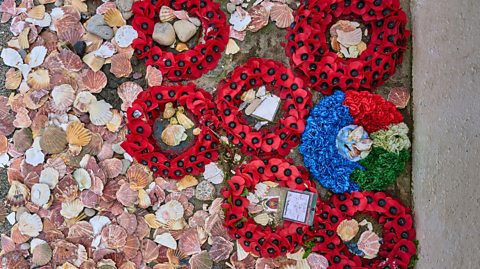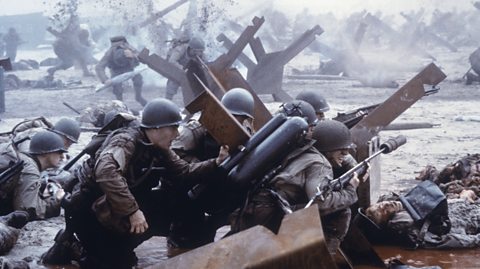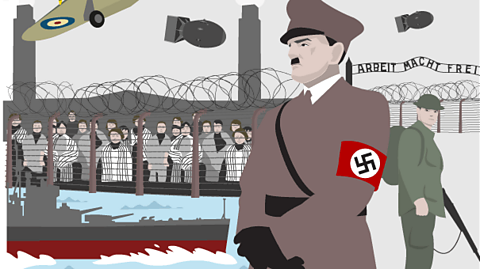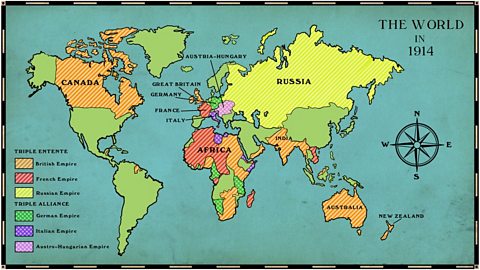D-Day is one of World War Two's most famous events, an operation that paved the way for the Allied forces' eventual victory over Nazi Germany.
But the image we have of what took place on Tuesday 6 June 1944 has been shaped as much by its depiction in popular culture as by hard fact.

A Bitesize overview
It's difficult to get a coherent impression of Operation Overlord (as the Battle of Normandy was codenamed), as it had so many different elements. Seven thousand naval vessels were involved in the Normandy landings, while 14,000 sorties (military units) were flown to provide aerial cover and drop 18,000 Allied paratroopers behind enemy lines. Then, there were the 132,000 ground troops who had to be landed on the five beaches code-named Utah, Omaha, Gold, Juno and Sword.
The bulk of these were American, British and Canadian. However, Australian, Belgian, Czechoslovakian, Dutch, French, Greek, New Zealand, Norwegian and Polish personnel played key supporting roles. With so many nationalities involved across a 50-mile area, it's hardly surprising that conflicting accounts emerged. Writers, artists and film-makers have since been putting their own spin on who did what, and how vital it proved to the mission's overall success.
Poetry and song
It seems appropriate to start with verse, as the 91»»±¨ alerted France to the imminent invasion with a coded message comprising three lines from Paul Verlaine's poem, Autumn Song. Yet, while poetry helped shape the popular view of the Great War, it played a less significant role in the Second World War. However, some pieces did emerge, like Actors Waiting in the Wings of Europe. This was written by 24 year-old Keith Douglas, who tragically didn't get to complete it, as he was killed three days into the campaign.
‘D-Day' was a common military term and was applied to any operation whose starting date was unknown or secret. Those who had seen several D-Days while fighting in North Africa and Italy deeply resented their efforts being overlooked. A song entitled D-Day Dodgers was written to the tune of Lili Marleen by Lance-Sergeant Harry Pynn to let people know that, just because they weren’t in France at the time of the D-Day we all commonly refer to, they weren’t ‘always on the vino, always on a spree’.

Such cynical wit contrasts greatly with the enduring pain of 90 year-old veteran Jim Radford's recollections of storming ‘the gates of hell’ in his 2019 chart topper, The Shores of Normandy, and the overblown melodramatics of the lyrics to Iron Maiden's 2006 heavy metal song, The Longest Day.
Photography and film
Dozens of newsreel cameramen risked their lives to give audiences around the world an insight into what D-Day was really like. Among them were Ken Gordon, Jock Gemmell and Jack Lieb, who shot some of the only colour images of the Normandy landings. Supervising the operation was Hollywood director George Stevens, who would go on to win two Oscars. Their footage can still be seen on specialist history channels like Yesterday, and in documentaries like Pascal Vuong's D-Day: Normandy 1944 (2014).
The first full-length film to mention D-Day was Garson Kanin and Carol Reed's The True Glory (1945), which won the Oscar for Best Documentary Feature. But, while several 1950s pictures referenced D-Day as part of a wider story, Charles Haas's Screaming Eagles and Henry Koster's D-Day: the Sixth of June (both 1956) sought to commemorate the actions of the paratroopers and the beach landing forces in more detail.

Hollywood continued to churn out war films that touched upon D-Day somewhere during the story. But they have all been overshadowed by Steven Spielberg's Saving Private Ryan (1998), whose opening over-20-minute-long sequence unflinchingly conveyed the day's chaotic carnage.
By centering on Ohama Beach, however, the film caused considerable controversy by focusing mainly on American activity. A huge critical and commercial success, Saving Private Ryan converted five of its 11 Oscar nominations and led to Spielberg and star Tom Hanks reuniting on Band of Brothers (2001), a TV adaptation of a Stephen Ambrose book that also opens around D-Day.

Video games
More interactive ways of representing the operation, whilst sometimes controversial, can serve as a way of teaching younger viewers about the sacrifices of their forebears. Whilst lots of video games centre around war, titles that specifically recreate the fight on the beaches at Normandy include Close Combat: Invasion Normandy (2000), Medal of Honor: Allied Assault, Battlefield 1942 (both 2002), Call of Duty (2003), Call of Duty 2 and Brothers In Arms: Road to Hill 30 (both 2005).
This article was published in June 2019
More about World War Two
Find out all about the conflict which lasted from 1939 to 1945.

Three WW1 memorial sites with incredible stories
All of these sites were built to commemorate those lost in WW1.

Why did World War One start?
KS2 History
